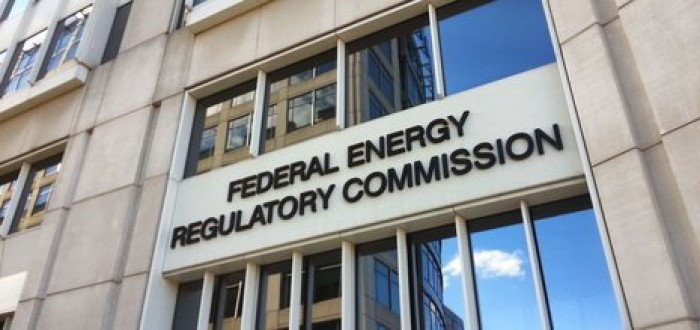Three Cheers for Three Victories at FERC
 | Isak Kvam, Communications / Policy Associate |
 | Rhonda Peters, Technical Consultant |

 | Isak Kvam, Communications / Policy Associate |
 | Rhonda Peters, Technical Consultant |
This quarter we saw a major victory for the wind industry on the topics of Queue Reform, E-NRIS, and interconnection studies. First, MISO proposed to reform its interconnection queue in August 2015 to address delays in the process of connecting electric-generating facilities to its system. This process resulted in MISO filing a Queue Reform Proposal to the Federal Energy Regulatory Commission (FERC) on December 31, 2015. However, this proposal was extremely rushed and contained multiple policies that would be detrimental to the wind industry. Ultimately, WOW, AWEA, and many wind companies filed comments with FERC in January 2016 to reject MISO’s proposal.
MISO’s Queue Reform Proposal included four major policies that were opposed by the wind industry. First was an increase to the “cash at risk” Milestones up to $30,000/MW, which developers must pay to initiate the interconnection process. Second, MISO proposed to remove the ability to withdraw without penalty if costs rose 25% between SIS and the Facility Study. Essentially, this meant that if network upgrades became unexpectedly more expensive than anticipated, the developer would no longer be able to withdraw without penalty. Third, MISO proposed a transition plan that would put 2015-queued projects expecting to be operating in 2016 at significant delay and increased risk. This meant that projects that have been waiting to be connected to the electrical grid would have to wait longer, adding stress to a developer’s financial situation. Lastly, MISO proposed limitations on Provisional GIAs, similar to changing a best practices manual in a way that did not help the wind industry. After WOW and AWEA filed comments objecting to MISO’s Queue Reform Proposal, FERC completely rejected it on March 29, 2016. WOW would like to thank the many wind companies and FERC attorneys that contributed to making this victory possible.
On the same day that FERC rejected MISO’s Queue Reform Proposal, FERC also sided with the wind industry on the topic of External Network Resource Interconnection Service (E-NRIS). External NRIS is the process by which an electricity generating facility outside of MISO connects to the MISO system, adding its capacity to the MISO footprint. Similarly, electric generating facilities that are inside MISO’s territory are granted either Energy Resources Interconnection Service (ERIS) or Network Resource Interconnection Services (NRIS). WOW members fall almost entirely into the ERIS category. The problem was that E-NRIS projects (those outside of MISO territory) were competing for access to the electricity grid that the wind industry (ERIS) was already in line for. And, E-NRIS projects did not have to put up the M2 Milestone or “cash at risk” that internal projects did; nor did they have to pay a percentage of the Network Upgrades 30 days after the interconnection terms are formalized in an agreement, like internal resources do.
When MISO proposed a Service Agreement to formalize External NRIS with FERC, it did not follow its own rules by bringing the matter through the Planning Advisory Committee for review after presenting at the Interconnection Process Task Force. WOW and AWEA filed protest comments at FERC on March 30, which stated that MISO’s proposal was unfair to generators internal to MISO. Specifically, WOW/AWEA included arguments found in the Commission’s March 29 ruling, where it sided with the wind industry that E-NRIS must pay the M2 Milestone and Network Upgrade deposits just as internal generators must. We are thrilled that FERC made this issue more equitable for the wind industry.
Not only did FERC reject MISO’s Queue Reform Proposal and agree with the wind industry on E-NRIS issues on March 29, but FERC also granted the wind industry’s request for a technical conference and set a date of May 13. Click here for more information. The wind industry requested that a technical conference be held to study interconnection issues that affect wind not just in the MISO footprint, but for other Regional Transmission Operators and Independent Systems Operators across the country. WOW expects this technical conference will lead to more efficient and effective interconnection practices for the wind industry going forward.
Thus, March 29 marked a day of three victories for the wind industry! FERC rejected MISO’s Queue Reform Proposal that was unfair to the wind industry. FERC supported the wind industry’s case in the E-NRIS issue, and they granted the request for a technical conference to improve interconnection processes across the country. Not only do these actions uphold the rights of wind generation; it sends a message to the entire energy industry that the Commission is taking all the steps possible to maintain equal treatment of wind and renewable energy resources. This marks a significant shift from past business practices due in large part to the depth of the wind industry, AWEA and representatives like WOW, as well as FERC’s acknowledgement that the electric grid is evolving toward a more renewable future that ISO/RTOs need to embrace. Again, WOW would like to acknowledge and thank all of the individuals who helped us achieve this significant step forward in our effort to deliver a renewable energy future.